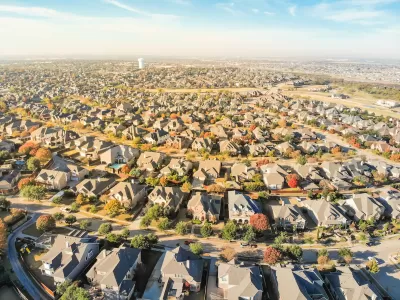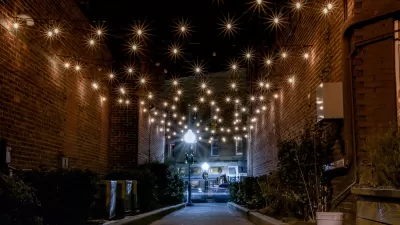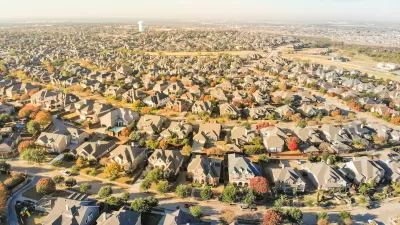Housing costs and availability are pushing more American households, including young families, to suburbs and exurbs — and they’re demanding changes.

Writing in Business Insider, Eliza Relman notes that “Most people in the US are suburbanites — and that likely won’t change anytime soon.” But that doesn’t mean suburbs and exurbs have to continue the unsustainable pattern of sprawl they have been known for for decades.
“As a suburb or exurb grows to accommodate more homes — which are mostly limited to detached single-family houses — roads grow, cars multiply, and the distance between someone’s house and their job, school, or grocery store stretches.” Consequently, “The challenge for urbanists, housing advocates, and anyone who cares about climate change is to figure out how to make the communities most Americans live in healthier for their inhabitants and the planet.”
Suburbs can change. They can become denser, more walkable, and more efficient, with mixed-use developments and essential needs within easy reach of residents. Already, restrictive zoning rules around the country are falling like dominoes as their impact on housing affordability becomes more evident.
According to the article, “all kinds of suburbs have the potential to free themselves from traffic and long commutes and create more vibrant neighborhoods. Suburbs need to prioritize loosening zoning laws, building more dense housing, and making it easier to get places without a car, experts say.”
FULL STORY: How millennials could give the suburbs a much-needed makeover

Maui's Vacation Rental Debate Turns Ugly
Verbal attacks, misinformation campaigns and fistfights plague a high-stakes debate to convert thousands of vacation rentals into long-term housing.

Planetizen Federal Action Tracker
A weekly monitor of how Trump’s orders and actions are impacting planners and planning in America.

San Francisco Suspends Traffic Calming Amidst Record Deaths
Citing “a challenging fiscal landscape,” the city will cease the program on the heels of 42 traffic deaths, including 24 pedestrians.

Defunct Pittsburgh Power Plant to Become Residential Tower
A decommissioned steam heat plant will be redeveloped into almost 100 affordable housing units.

Trump Prompts Restructuring of Transportation Research Board in “Unprecedented Overreach”
The TRB has eliminated more than half of its committees including those focused on climate, equity, and cities.

Amtrak Rolls Out New Orleans to Alabama “Mardi Gras” Train
The new service will operate morning and evening departures between Mobile and New Orleans.
Urban Design for Planners 1: Software Tools
This six-course series explores essential urban design concepts using open source software and equips planners with the tools they need to participate fully in the urban design process.
Planning for Universal Design
Learn the tools for implementing Universal Design in planning regulations.
Heyer Gruel & Associates PA
JM Goldson LLC
Custer County Colorado
City of Camden Redevelopment Agency
City of Astoria
Transportation Research & Education Center (TREC) at Portland State University
Jefferson Parish Government
Camden Redevelopment Agency
City of Claremont





























